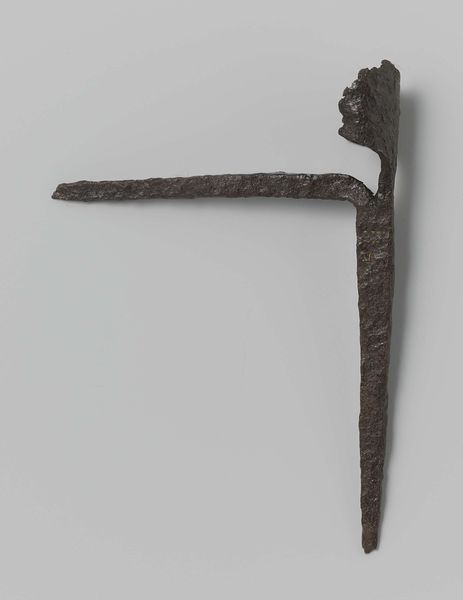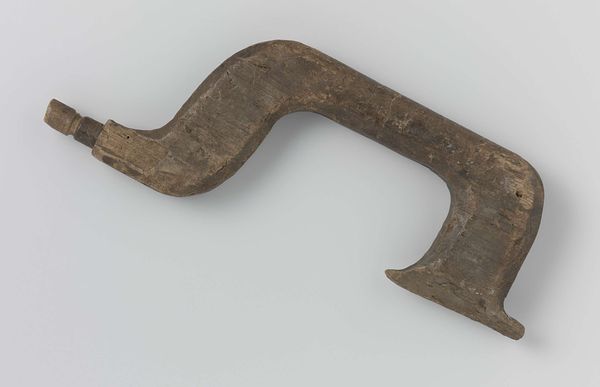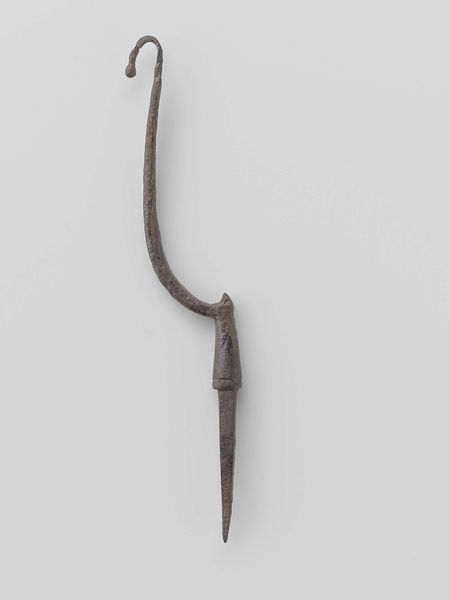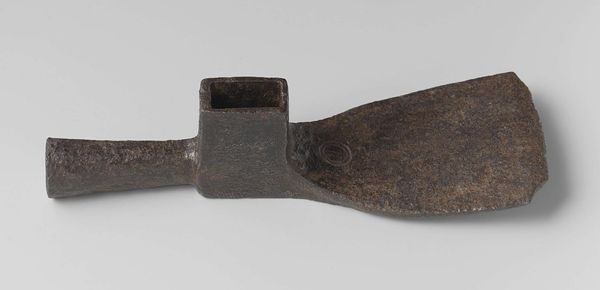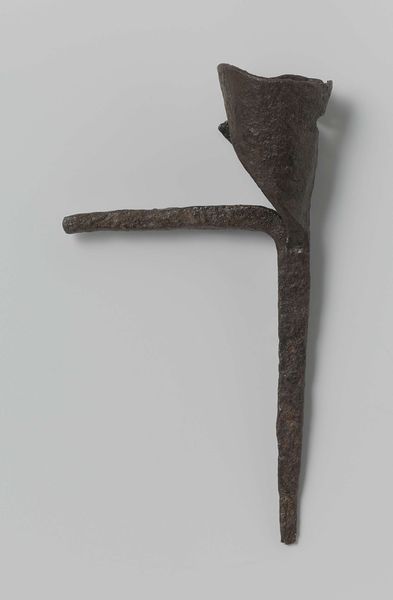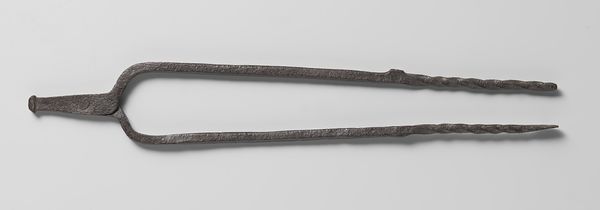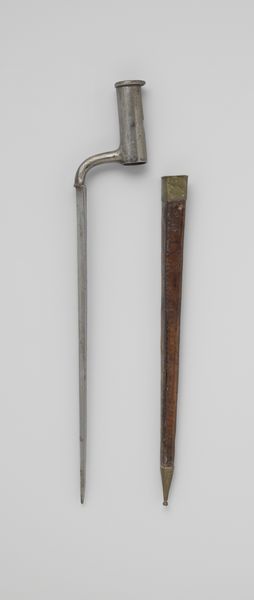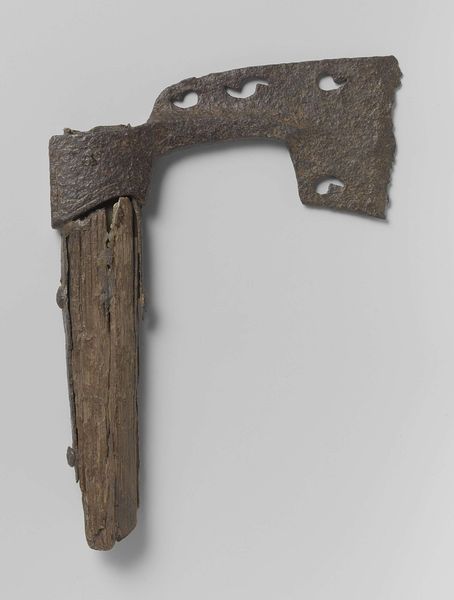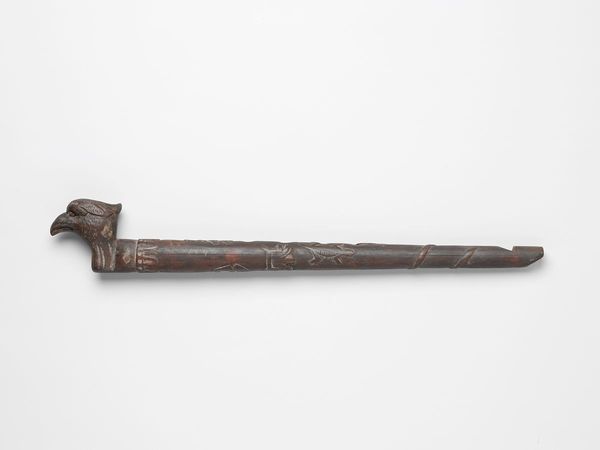
sculpture, wood
sculpture
form
11_renaissance
geometric
sculpture
line
wood
Dimensions: length 26 cm, width 7.3 cm
Copyright: Rijks Museum: Open Domain
Editor: We’re looking at a sculpture called “Navigation,” made around 1590-1596 by an anonymous artist. It's crafted from wood and currently resides in the Rijksmuseum. I’m immediately struck by its geometric simplicity. What do you see in this piece from a formalist perspective? Curator: I observe a deliberate interplay between straight and curved lines, establishing a visual rhythm. The horizontal bar provides a stable base, juxtaposed against the concentric arcs that suggest movement, expansion. The artist’s emphasis seems to be on the essence of form itself. Editor: It’s interesting how you point out the contrast. The wood itself has a texture, but it's subordinate to the overall shape. Is there significance to that? Curator: Precisely. The materiality, while present, is secondary to the structural relationships at play. Note the way the carved grooves echo the larger arcs, creating a kind of fractal pattern within the overall design. This creates visual depth and encourages closer inspection. The semiotics here revolve around form as language, where geometric components construct meaning independent of representational concerns. Editor: So, the artist might not have been concerned with anything beyond the pure relationships of the shapes themselves? Curator: One could argue that the title ‘Navigation’ serves as a mere point of entry; however, the work’s power resides primarily in its aesthetic composition rather than its mimetic or symbolic capabilities. How else would you approach its artistic structure? Editor: I’m beginning to see the sculpture as a statement about basic elements—line, shape, texture—and how they interact. It makes you consider the fundamentals of visual language. Curator: Indeed. It reinforces the potency of simple forms arranged meticulously to construct more than mere decoration.
Comments
To determine the ship’s position and chart its course, the captain had an entire arsenal of instruments at his disposal. Among the items found on Nova Zembla are an astrolabium catholicum (universal astrolabe), a fragment of a copper sounding line, a cross staff, a sextant and a chart compass.
Join the conversation
Join millions of artists and users on Artera today and experience the ultimate creative platform.
